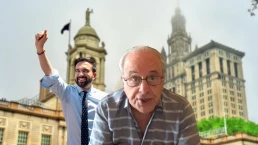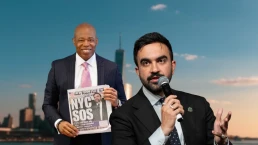Run-ins with regulators, financial troubles, and a highly publicized penchant for dangerous risk was what Silicon Valley Bank was best known for in the decades before its collapse this year. So why was it allowed to grow so big, and so unregulated?
by Branko Marcetic, Jacobin
As the fallout from the collapse of Silicon Valley Bank (SVB) continues to fan outward, a mountain of questions remains about the regulatory failures that let it happen. Federal Reserve chair Jerome Powell — who cited systemic risk as a reason to bail out the bank’s depositors despite explicitly declaring that there was no such risk just two years ago — recently called out its management for having “failed badly.”

“They grew the bank very quickly,” he said. “They exposed the bank to significant liquidity risk and interest-rate risk, didn’t hedge that risk.”
Powell’s statement begs the question of why regulators went so easy on the bank, given the reckless behavior of its management, let alone why elected officials went along with the bank’s lobbying campaign to exempt itself from stricter regulations. These questions are even more pertinent when you consider that SVB’s penchant for riskiness wasn’t a recent development, but a core, highly prominent feature of its public-facing image for decades — and one that had gotten it in financial trouble many times before.
“We Are Good Bankers”
SVB got its start in 1983, shortly after presidents Jimmy Carter and Ronald Reagan and bipartisan majorities in Congress deregulated the banking industry. In an interview decades later, the bank’s founders, Roger V. Smith and Robert Medearis, pointed to this deregulation as a major factor in the bank’s creation, at a time when budding tech creators were on the hunt for capital.
“A lot of them came and wanted to find out how they could get financing from banks because they just weren’t — if you had an idea, venture capitalists weren’t around yet,” said Medearis. “I got the idea that hey, maybe, just maybe, after Reagan came in and eased up the regulatory structure, that there could be a financial institution.”
Recent Posts
Mayor Mamdani’s First Day, A Zero Hour Conversation With Richard Wolff
July 2, 2025
Take Action Now If elected, what would Mayor Mamdani do on his first day in City Hall? How would a democratic socialist govern as a big-city mayor?……
The U.S. Is Funding A Bloodbath At Gaza Aid Centers
July 2, 2025
Take Action Now The admin just gave $30M to GHF, the organization at the center of charges that Israel is weaponizing assistance and shooting at…
Feeding The Warfare State
July 1, 2025
Take Action Now We Lose, the Weapons Makers WinBy William D. Hartung, Tom Dispatch The Senate is on the verge of passing the distinctly misnamed…
The Rage Of Billionaires And The Frenzy To Stop Zohran Mamdani From Becoming New York’s Mayor
June 30, 2025
Take Action Now The constellation of forces now regrouping with a vengeance includes titans of Wall Street, enormous real estate interests,…




